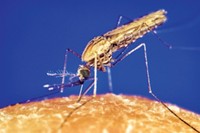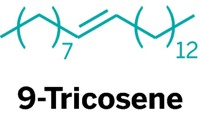Advertisement
Grab your lab coat. Let's get started
Welcome!
Welcome!
Create an account below to get 6 C&EN articles per month, receive newsletters and more - all free.
It seems this is your first time logging in online. Please enter the following information to continue.
As an ACS member you automatically get access to this site. All we need is few more details to create your reading experience.
Not you? Sign in with a different account.
Not you? Sign in with a different account.
ERROR 1
ERROR 1
ERROR 2
ERROR 2
ERROR 2
ERROR 2
ERROR 2
Password and Confirm password must match.
If you have an ACS member number, please enter it here so we can link this account to your membership. (optional)
ERROR 2
ACS values your privacy. By submitting your information, you are gaining access to C&EN and subscribing to our weekly newsletter. We use the information you provide to make your reading experience better, and we will never sell your data to third party members.
Biological Chemistry
New Ingredient For Mouse Attraction
Researchers discover molecule in male mouse urine that attracts the ladies
by Sarah Everts
January 21, 2013
| A version of this story appeared in
Volume 91, Issue 3
Some men rely on cologne to snag a date. Male mice prefer to use urine. Researchers led by the University of Tokyo’s Kazushige Touhara have discovered a molecule in urine from male mice that increases females’ attraction to the liquid (Nat. Chem. Biol., DOI: 10.1038/nchembio.1164). The compound, a short aliphatic alcohol, joins a potpourri of other known odor cues found in mouse urine. Mice use urine in various social contexts. It contains odor cues that indicate gender, male dominance, pregnancy, and ovulation. Touhara’s team discovered the attraction molecule while trying to find the role of a mouse odor receptor of unknown function. They first expressed the orphan odor receptor in frogs’ oocytes. Then they exposed the receptor to extracts of mouse tears, saliva, urine, and mammary glands and looked for binding. After finding positive results with urine, they did progressive fractionations to finger the binding partner. Finally, the team did animal studies and found that the molecule attracts female mice to male urine.





Join the conversation
Contact the reporter
Submit a Letter to the Editor for publication
Engage with us on Twitter